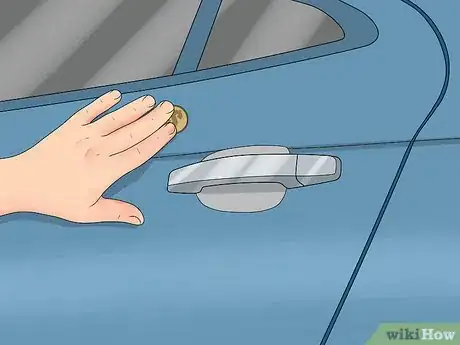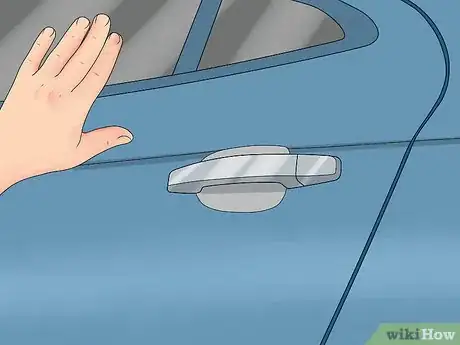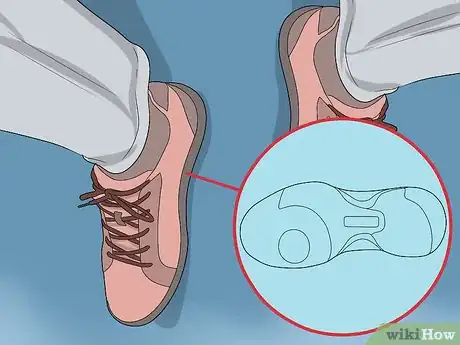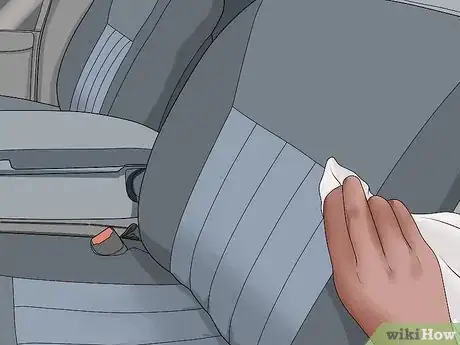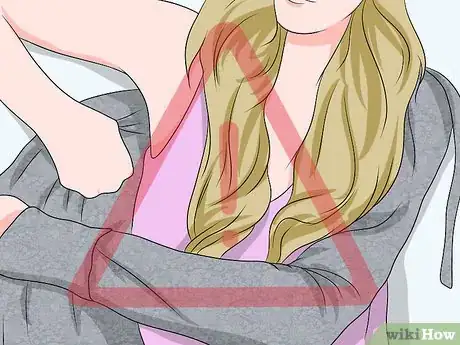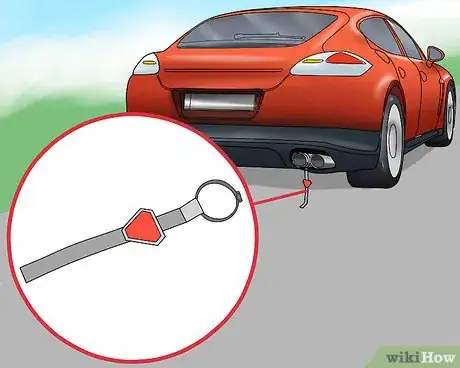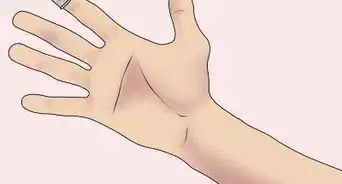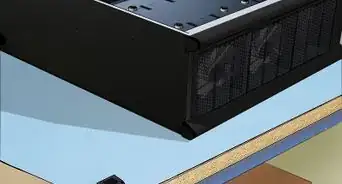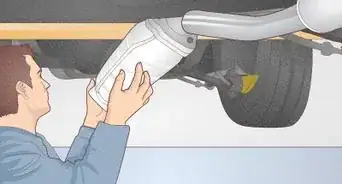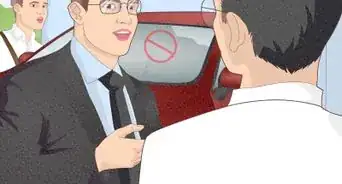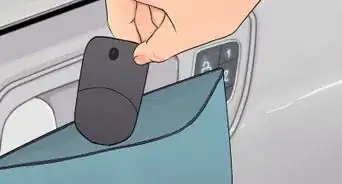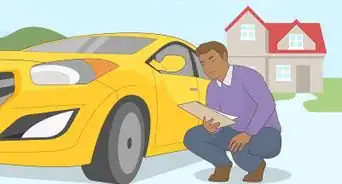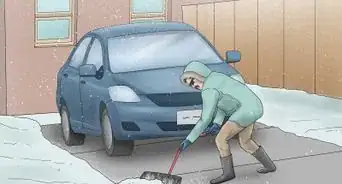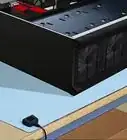This article was co-authored by wikiHow Staff. Our trained team of editors and researchers validate articles for accuracy and comprehensiveness. wikiHow's Content Management Team carefully monitors the work from our editorial staff to ensure that each article is backed by trusted research and meets our high quality standards.
wikiHow marks an article as reader-approved once it receives enough positive feedback. In this case, 84% of readers who voted found the article helpful, earning it our reader-approved status.
This article has been viewed 533,661 times.
Learn more...
Do you yelp every time you touch a car door handle? These shocks usually happen because you and the car seat have picked up opposite charges during the ride. To prevent the zap, either make contact in a way that lets the charge balance out harmlessly, or prevent the static gathering in the first place.
Steps
Discharging Static Safely
-
1Hold the metal frame as you exit the car. Most shocks happen because you and the car have picked up opposite charges. Leaving your seat separates these charges, creating the potential for a static shock. Touching the metal of the car as you get out lets the charge balance out by flowing harmlessly through your hand.[1]
- If you still get shocked, the paint on the metal might not be conductive enough. Touch bare metal instead.
-
2Use a coin to touch the car. Another way to protect yourself is to touch the car with a coin or other metal object after you get out. You might see a spark travel between the car and the coin, but it won't hurt your hand.
- Don't use a key that contains an electronic chip. The shock could destroy the chip and make your key unusable.[2]
Advertisement -
3Touch the window for a couple seconds. If you've already left the car and don't have any coins on you, put your hand on the window. Glass is less conductive than metal, so the charge will run through you too gently to cause a shock.[3]
Preventing Static
-
1Wear shoes with conductive soles. Most shoes with rubber or plastic soles insulate you from the ground. If you switch to shoes with real leather soles, or special electrical static discharge (ESD) shoes, charge will have more trouble building up on your body.[4] Even if you do pick up charge during a car ride, it should flow out through these shoes as soon as you step onto the ground.
-
2Treat the car seats with fabric softener. Rubbing fabric softener sheets onto the car seat can eliminate static cling, at least for a few days. Alternatively, mix a teaspoon (5 mL) of liquid fabric softener in a quart (liter) of water. Mix well and spray onto the seat.[5]
-
3Be aware of your clothing. Synthetic materials, such as most modern fleeces, increase the risk of static shock. Even natural fibers like wool or cotton can build up a high charge, though, so it's not worth changing your wardrobe.[6] Just be extra careful while you're wearing polyester.
-
4Attach a grounding strap if you have non-conductive tires. "Low rolling resistance" tires made with silica are poor electrical conductors. This can cause the car to pick up a static charge as you drive, since it can't discharge it into the ground.[7] A static discharge strap that connects your car to the road can solve this problem.
- Very old vintage cars may use plain white rubber tires, which have the same problem.
- Ordinary tires are treated with carbon black, a conductive material.[8] A grounding strap makes no difference for cars with these tires. (Shocks can still happen, but the charge difference is between you and the car, not the car and the ground.)
Community Q&A
-
QuestionEven when I am out of the car and I open the door to go in the store, I get shocked.
 Community AnswerTouch glass or another non-conductive part of the building to ground yourself slowly before you touch the metal. If this bothers you often, wear shoes with conductive soles (like leather).
Community AnswerTouch glass or another non-conductive part of the building to ground yourself slowly before you touch the metal. If this bothers you often, wear shoes with conductive soles (like leather). -
QuestionWill covering my seats help?
 Community AnswerCovering your seats with fitted covers made mostly of polyester does not stop the static. The best option is the anti-static laundry spray.
Community AnswerCovering your seats with fitted covers made mostly of polyester does not stop the static. The best option is the anti-static laundry spray. -
QuestionIf I rub my feet really hard against the floor mats, then step out and immediately touch the door frame, will it shock me enough to restart my heart?
 Community AnswerNo, static shock will definitely not be able to restart your heart. There's too little current flowing.
Community AnswerNo, static shock will definitely not be able to restart your heart. There's too little current flowing.
Warnings
- This is actually a safety tip, as static electricity, if not discharged, has actually caused small explosions at gas pumps. You should never re-enter your car while gassing up, as this can provide more static electricity. If you must, make sure you follow the directions above to discharge the electricity before you get anywhere near the fuel pump!⧼thumbs_response⧽
References
- ↑ http://amasci.com/emotor/zapped.html
- ↑ http://h2g2.com/edited_entry/A6378744
- ↑ http://h2g2.com/edited_entry/A6378744
- ↑ http://amasci.com/emotor/zapped.html
- ↑ http://amasci.com/emotor/zapped.html
- ↑ http://web.archive.org/web/20110815205204/http://www.jci.co.uk/Carseats2.html#6
- ↑ http://articles.orlandosentinel.com/1996-05-23/topic/9605210426_1_rolling-resistance-tires-helium-static-electricity
- ↑ http://pubs.acs.org/doi/abs/10.1021/ie50389a020?journalCode=iechad
About This Article
To get out of a car without getting shocked by static electricity, either touch something that lets the charge balance out or prevent the static from gathering in the first place. Most shocks happen because you and the car have picked up opposite charges, so try holding the metal frame as you get out of the car to balance the charge out. Another way to protect yourself from getting shocked is to touch the car with a coin or other metal object after you get out. However, don’t use a key that has an electronic chip since the shock could destroy the chip and make the key unusable. To prevent the charge from gathering in the first place, rub fabric softener sheets on your seats every few days. To learn how to prevent static with your shoes, keep reading!

